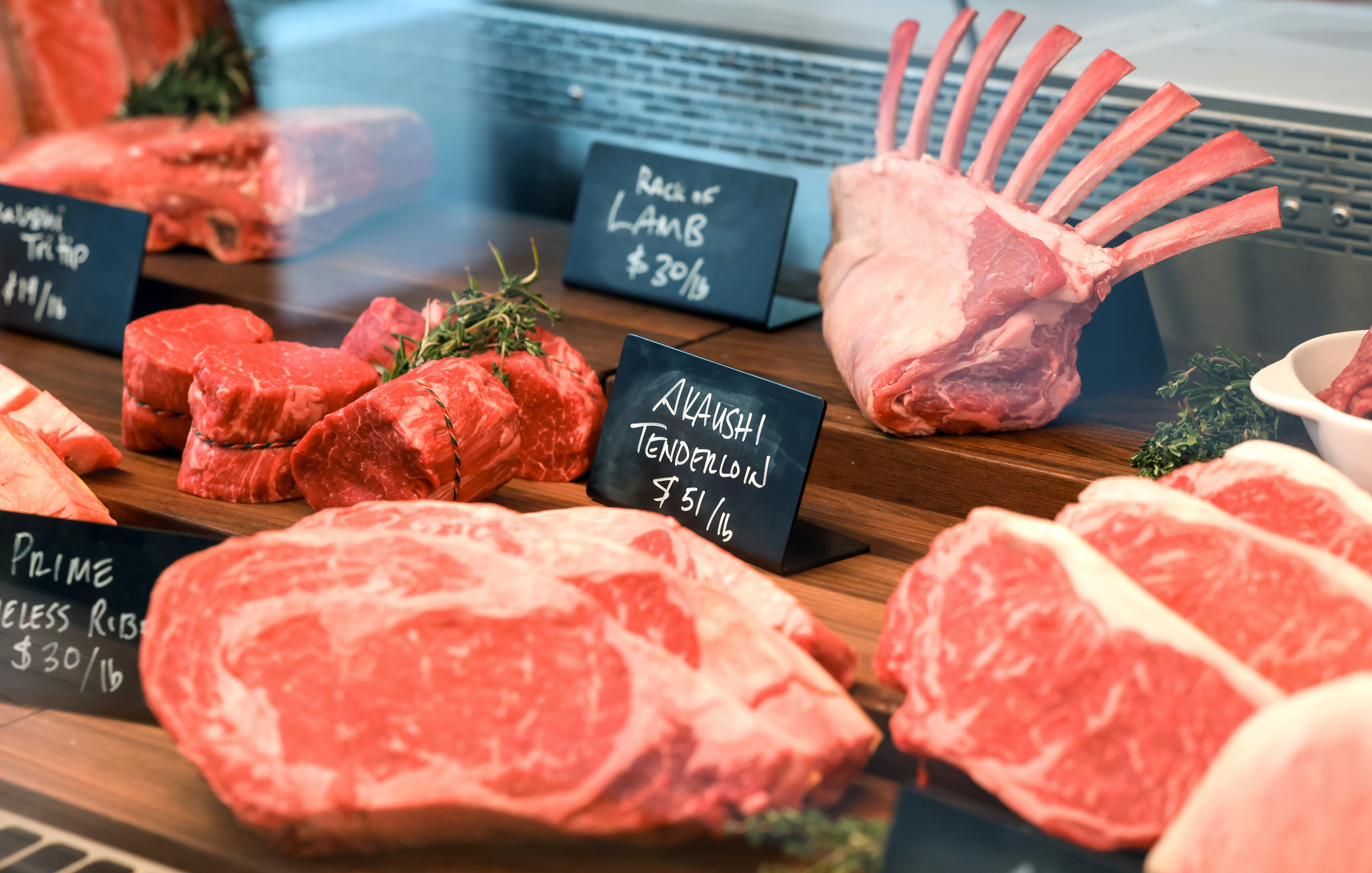Discover Fresh Cuts at Bagley Farms Meat Market Edwardsville IL for Your Following BBQ
Discover Fresh Cuts at Bagley Farms Meat Market Edwardsville IL for Your Following BBQ
Blog Article
Uncover the Art of the Butcher's Cut in a Modern Meat Market
In the ever-evolving landscape of contemporary meat markets, the butcher's cut has actually transcended its traditional roots, combining old-time workmanship with contemporary methods. What genuinely sets the contemporary butcher apart is their capacity to build a deeper link in between consumers and the beginnings of their meat.
Advancement of Butchery Techniques

The mid-20th century saw butchery methods additionally improved by clinical insights into muscle biology and meat aging, boosting both inflammation and preference. Developments like vacuum product packaging and refrigeration extended item shelf-life, permitting butchers to diversify offerings and enhance quality assurance. This period additionally noted the increase of specialized devices, such as band saws and meat slicers, which raised precision and effectiveness in meat handling.
Digital systems currently assist in tracking pet provenance and maximizing cuts to satisfy certain consumer choices. Furthermore, a revival in artisanal butchery has emerged, mixing standard skills with contemporary knowledge to cater to consumers seeking moral and lasting meat choices.

Recognizing Meat Cuts

Recognizing the ins and outs of meat cuts is vital for both butchers and customers looking for quality and value. Each cut originates from a different component of the animal, giving unique flavors, appearances, and food preparation techniques. Mastery of these distinctions not only boosts culinary experiences however additionally makes best use of the utility of each carcass. For butchers, specific cuts reflect ability and respect for the craft, ensuring very little waste and ideal return.
The key categories of meat cuts consist of primal, sub-primal, and retail cuts. Butchers then damage these down better right into sub-primal cuts, prior to finally generating retail cuts available to consumers, like ribeye or tenderloin.
Understanding muscle structure is vital; muscles used extra frequently by the animal have a tendency to be harder and are best fit for sluggish cooking methods, while less-used muscles, like those located in the loin, are a lot more tender and perfect for grilling or roasting. Familiarity with these differences empowers customers to make enlightened options, boosting their culinary undertakings.
Picking Quality Meat
Picking the right meat includes more than just choosing a visually enticing piece from the display screen. The art of choosing high quality meat needs a critical eye and knowledge of particular qualities that indicate quality and quality.
Secondly, take into consideration the marbling, which describes the white streaks of fat within the muscle. Correct marbling is an essential indication of tenderness and flavor, as it melts throughout cooking, enhancing the meat's juiciness. Bear in mind, higher marbling typically correlates with superior quality cuts, such as USDA Prime.
Texture is an additional vital variable; meat needs to really feel strong to the touch, not slimed or excessively soft. Furthermore, be mindful of the aroma. Fresh meat ought to have a clean, neutral smell, devoid of any type of sour or repulsive odors.
Coupling Cuts With Food Preparation Techniques
Effectively coupling cuts of meat with the ideal food preparation methods is important for accomplishing optimal taste and structure. Different cuts differ in inflammation, marbling, and connective tissue web content, each calling for details strategies to unlock their potential. Tender cuts like filet mignon and ribeye, with their inherent marbling, benefit from high-heat, quick-cooking internet methods such as cooking or pan-searing. These approaches boost the meat's natural tastes and guarantee a juicy surface.
On the other hand, tougher cuts like brisket and chuck roast are rich in collagen, which breaks down into gelatin when prepared gradually. These cuts are suitable for braising or slow-moving roasting, allowing the meat to soften with time and establish deep, intricate flavors. Cuts such as brief ribs and pork shoulder make out well with slow-cooking techniques, original site where extended cooking times transform their robust appearances into succulent dishes.
Lamb shanks and oxtail, which require prolonged food preparation to soften, are best candidates for stewing or slow simmering. These techniques coax out rich, hearty tastes while maintaining dampness. By understanding the distinct characteristics of each cut, cooks and home cooks alike can elevate their culinary productions, ensuring each dish is both satisfying and unforgettable.
The Butcher's Function Today
Navigating the advancing landscape of the modern meat market, the butcher's role today prolongs past mere prep work of cuts. Contemporary butchers are cooking craftsmens, educators, and supporters for sustainable methods. They connect the gap in between the ranch and the fork by guaranteeing moral sourcing, understanding animal husbandry, and prioritizing transparency in the supply chain. This shift shows the growing customer demand for high quality over quantity, where provenance and animal well-being are vital.
In addition to crafting exact cuts, butchers currently involve straight with clients, supplying cooking guidance and customizing selections to pop over to this web-site suit individual demands and choices. Their proficiency in meat aging, marbling, and flavor accounts empowers consumers to make informed choices, improving their culinary experiences. This tailored solution exemplifies the butcher's developing function as a relied on expert in the cooking area.
Additionally, butchers are crucial in reducing waste, making use of whole animals to develop diverse items such as sausages and stocks - bagley farms meat market edwardsville il. This detailed technique not only values the pet however likewise lines up with contemporary sustainability objectives. This way, the contemporary butcher symbolizes both tradition and advancement, adapting to an ever-changing market while protecting the virtuosity and integrity of their craft

Conclusion
Proficiency in recognizing varied meat cuts and top quality indications encourages butchers to supply informed suggestions, aligning details cuts with ideal food preparation methods. By recognizing historical methods while accepting contemporary needs, the butcher's function continues to be vital in today's innovative meat market.
Report this page